Reconnecting Alki Beach to Schmitz Preserve Park: UW students present visionary designs
University of Washington Landscape Architecture masters level students show their concepts for how Schmitz Preserve Park might be reconnected to Alki Beach as part of design exercise at the school. From left: Nidhi Jain,Yuyan Wu, MacKenzie Keen
Photo by Patrick Robinson
Sat, 11/16/2024
Master's level landscape architecture students from the University of Washington under the guidance of instructor Paul Peters presented their 60% design phase concepts for the future of Schmitz Preserve Park and its connection to Alki Beach on Nov. 15 at Gould Hall in the University District. This eight week design exercise is meant to teach the students analysis, evaluation, design and presentation skills involving the use of software design tools and 3-D models meant for visualization and presentation.
It should be noted that these designs are all high level conceptual ideas that would face enormous hurdles before they could become a reality including, funding, permitting, potential property acquisition and community support. The product of their efforts could serve as an advisory and conceptual guide to any real work that might be done in the future.
The program was initiated through outreach by the Schmitz Park Creek Restore project whose mission includes daylighting the creek and restoring the salmon run. That citizen driven effort is in the process of gathering support for its admittedly long term three part mission of preserving the park, daylighting the creek to restore the salmon run, and connecting the park to Alki Beach.
In attendance at the presentation were some West Seattle and Alki community residents, and notably architecture faculty member Vincent Javet, Assistant Professor UW plus Osama Quotah, Partner at LMN Architects and others whose questions and comments will be incorporated into the students next phase of design.
The designs focused on three distinct zones: The Forest, a Tidal Park replacing the existing Alki playfield, and Alki Beach. The presentations emphasized the importance of community engagement, ecological restoration, and adapting to future climate challenges. They looked ahead in "ecological time" more than 100 years when sea levels are forecast to rise as much as four feet. One graphic depicted King Tide and storm surge reaching to the middle of the area of Alki Playfield in the future.
A more fully realized design meeting is set for Dec. 6 and will be open to the public at the Alki Bathhouse. The students are now working to merge the three different areas into a cohesive plan.
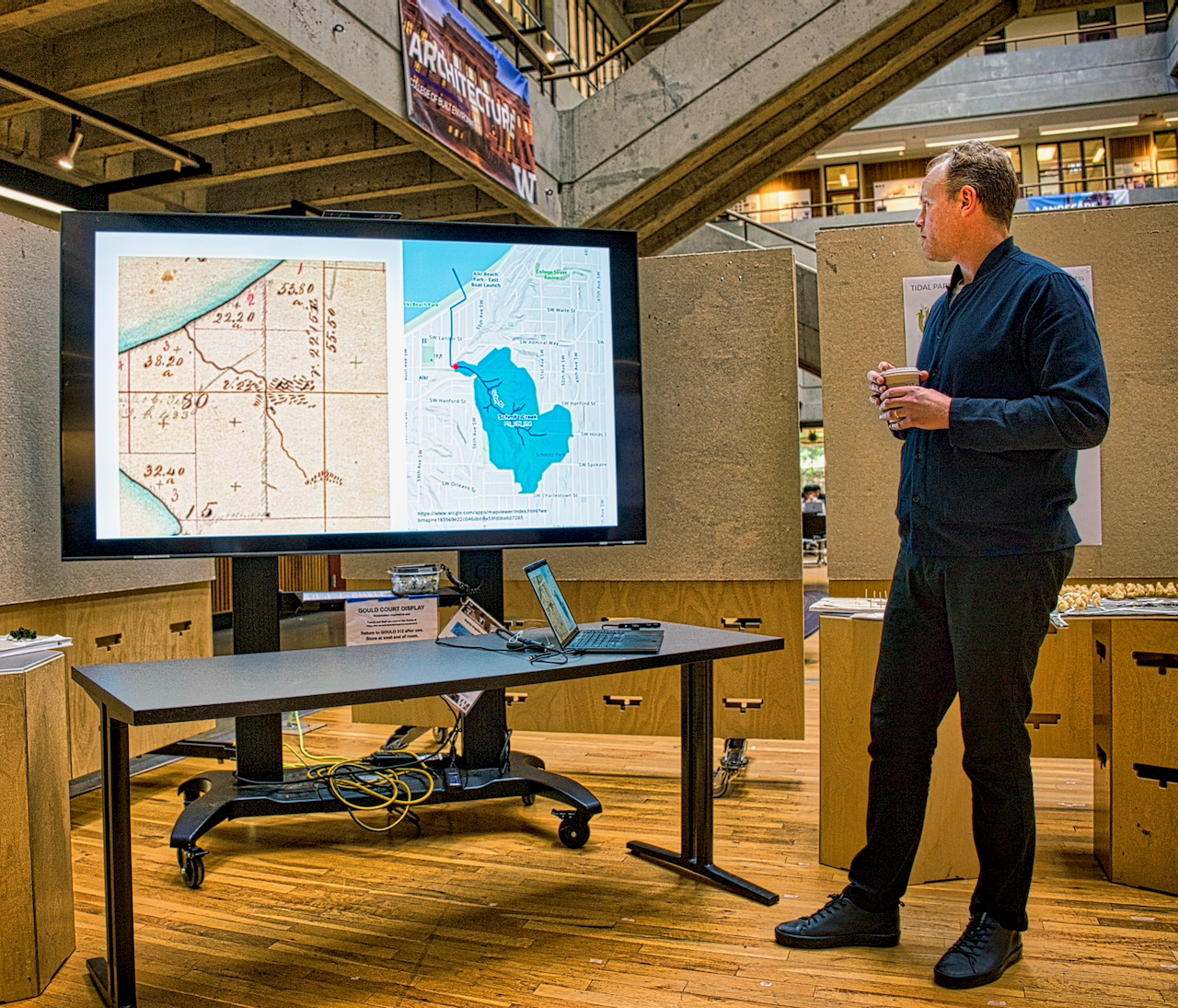
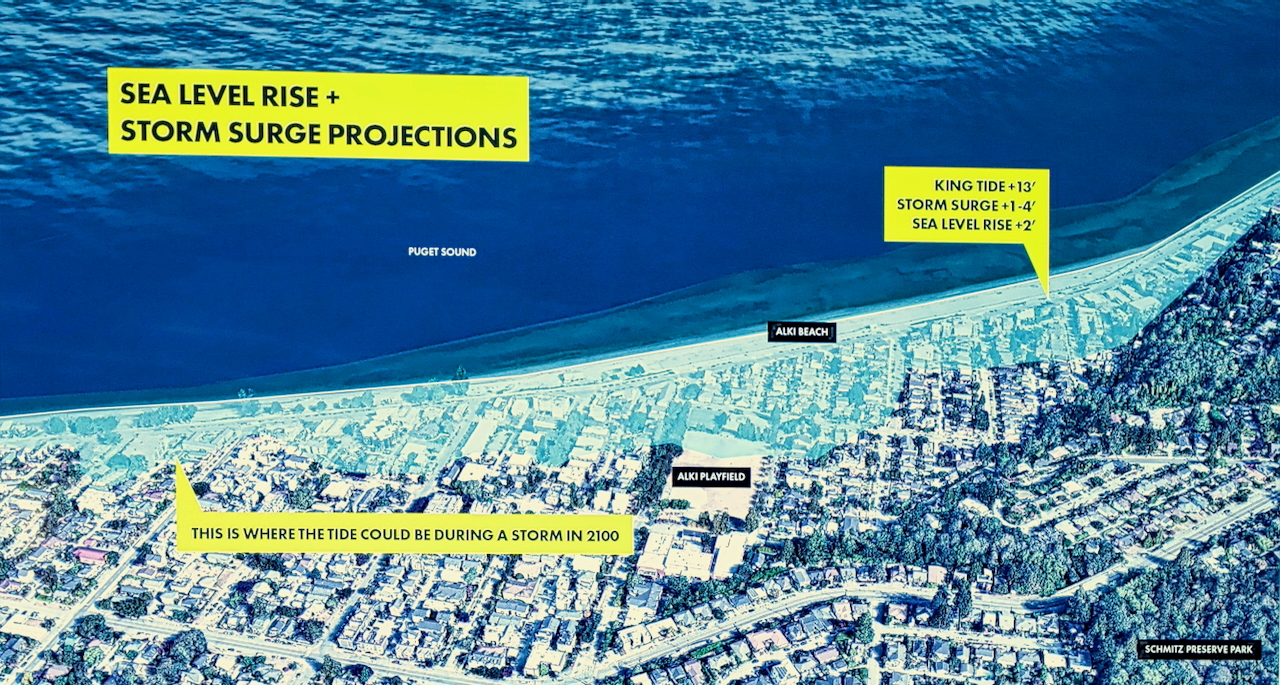
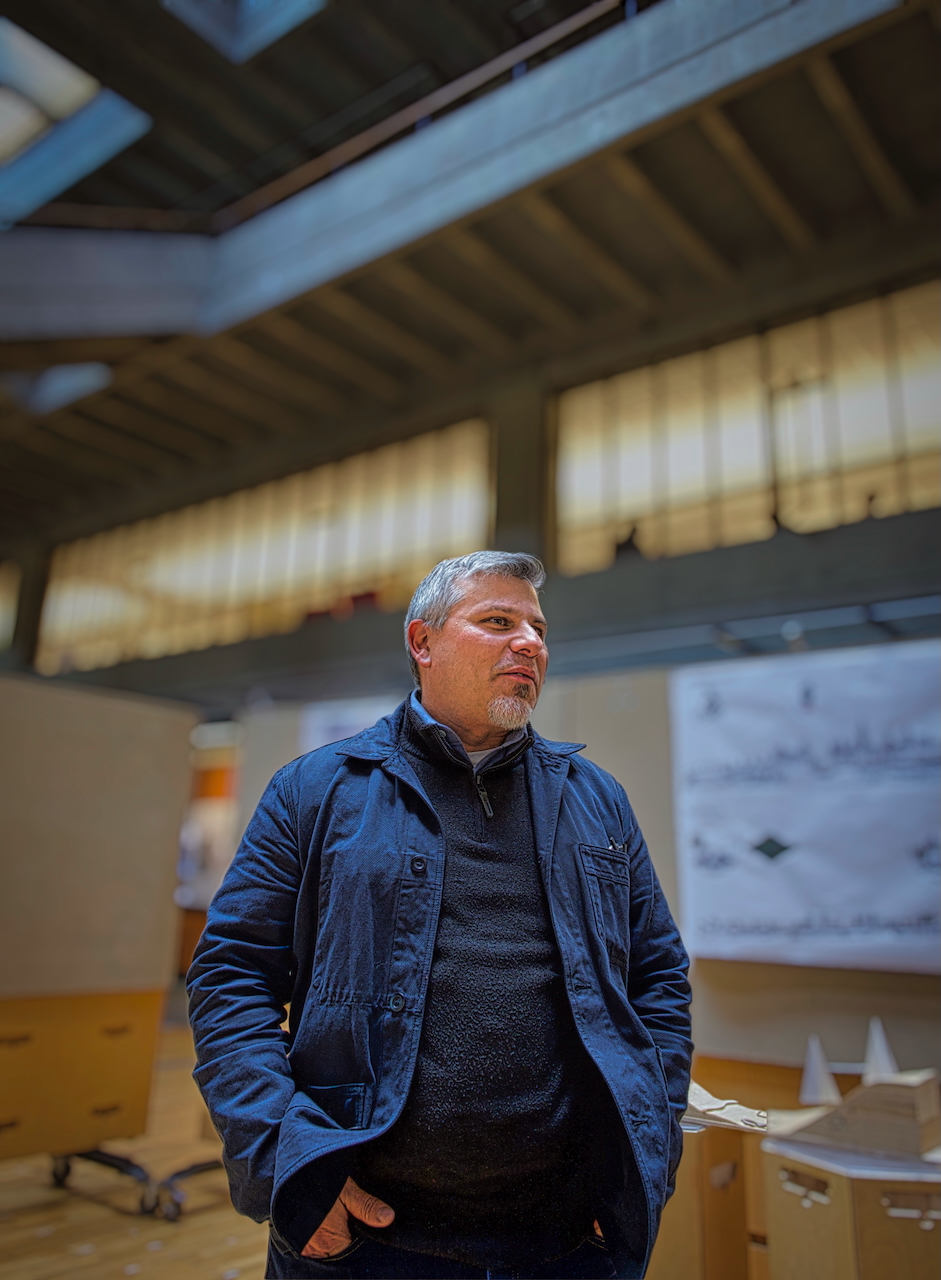
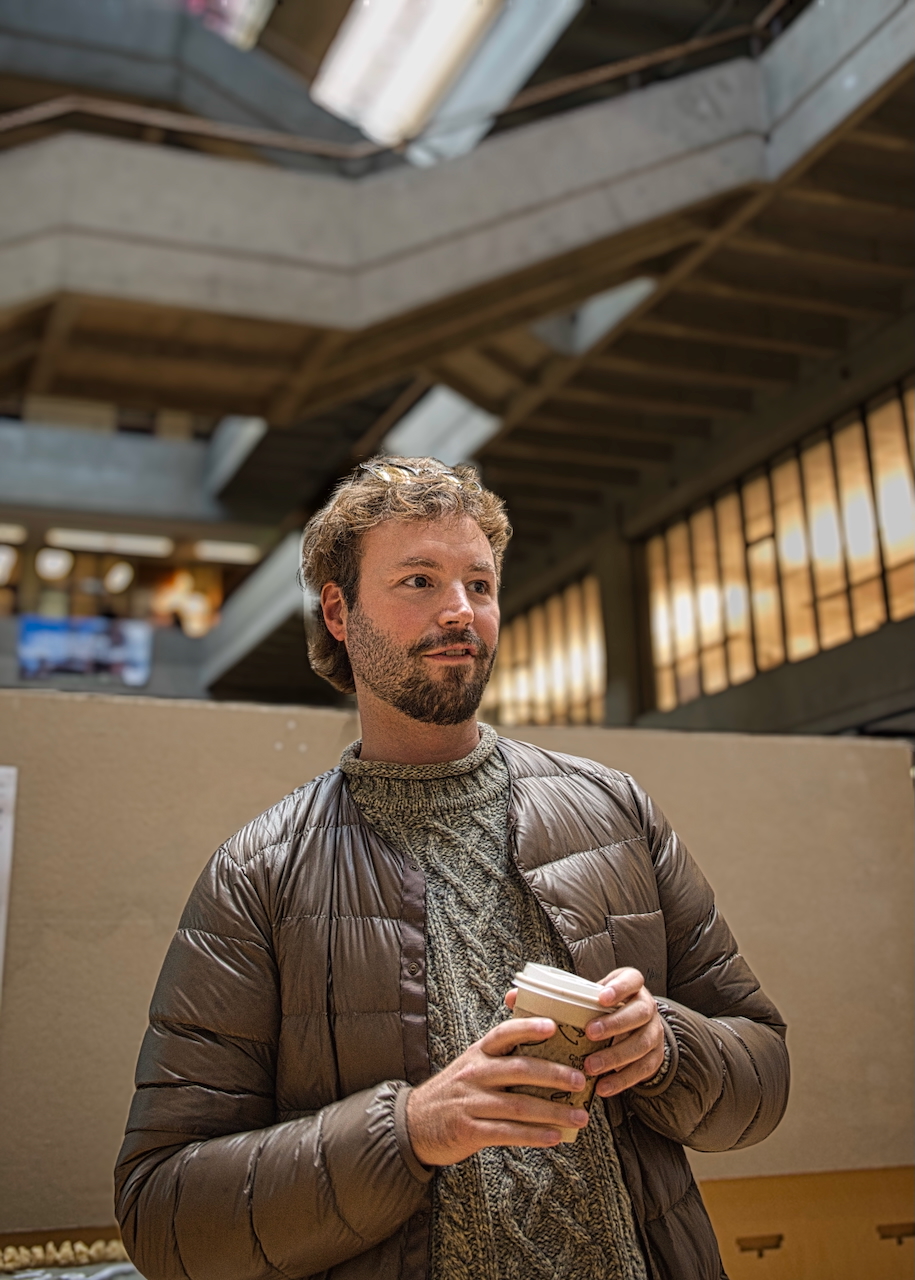
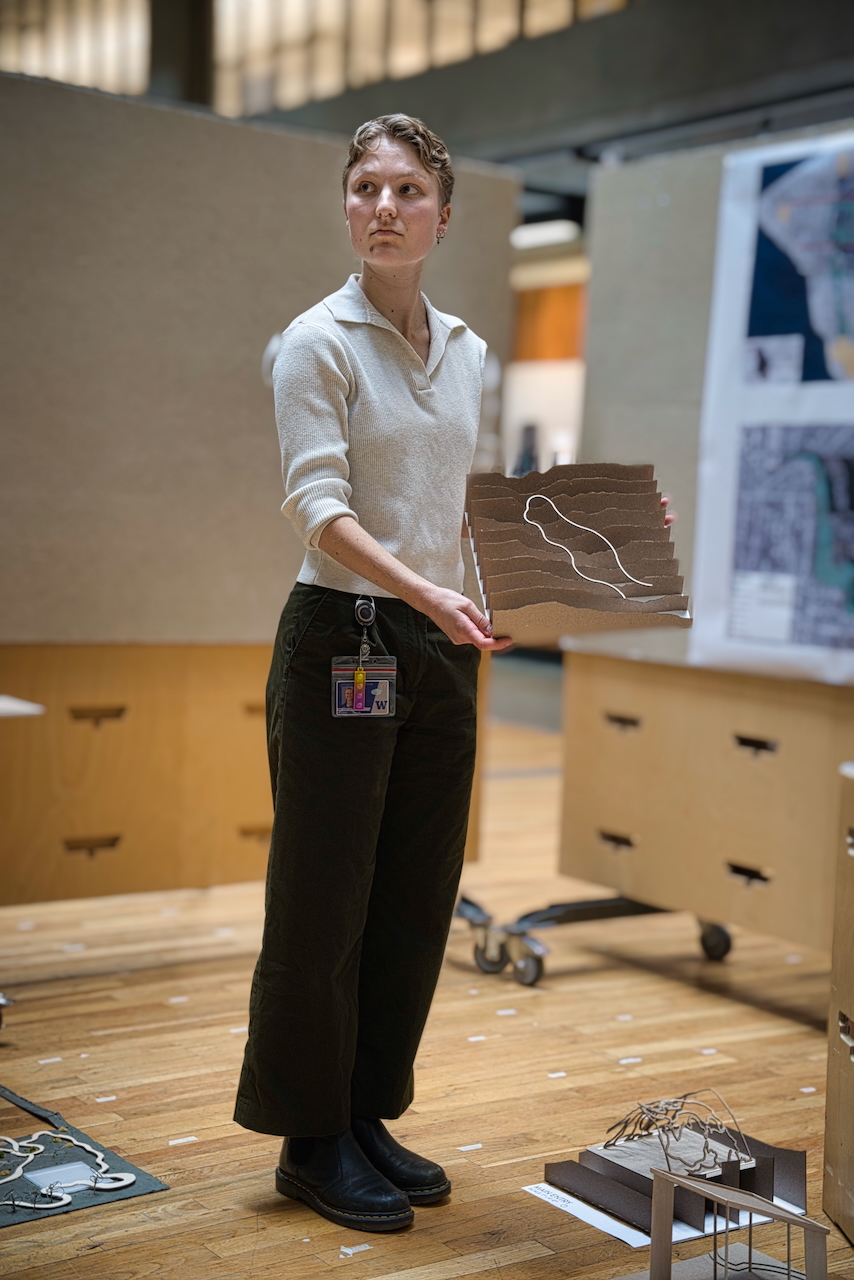
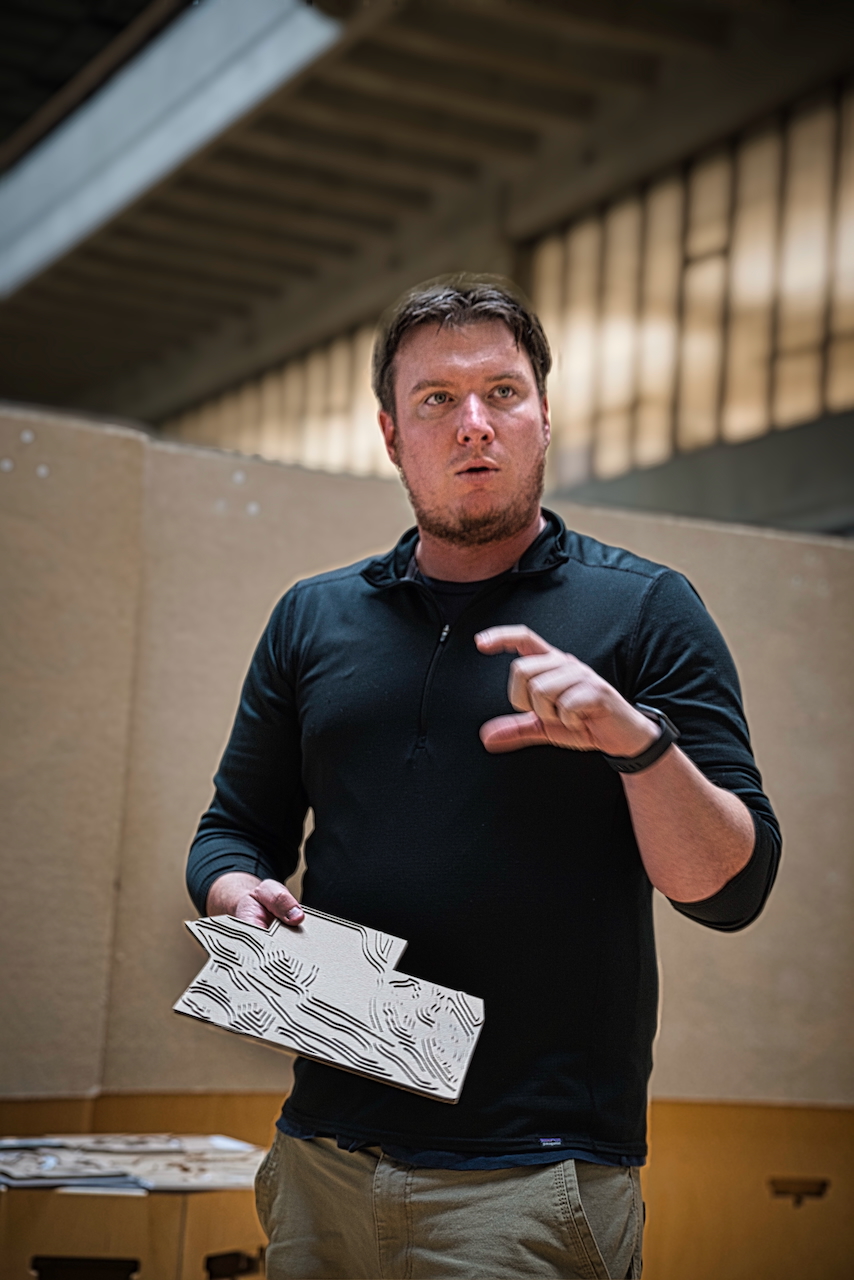
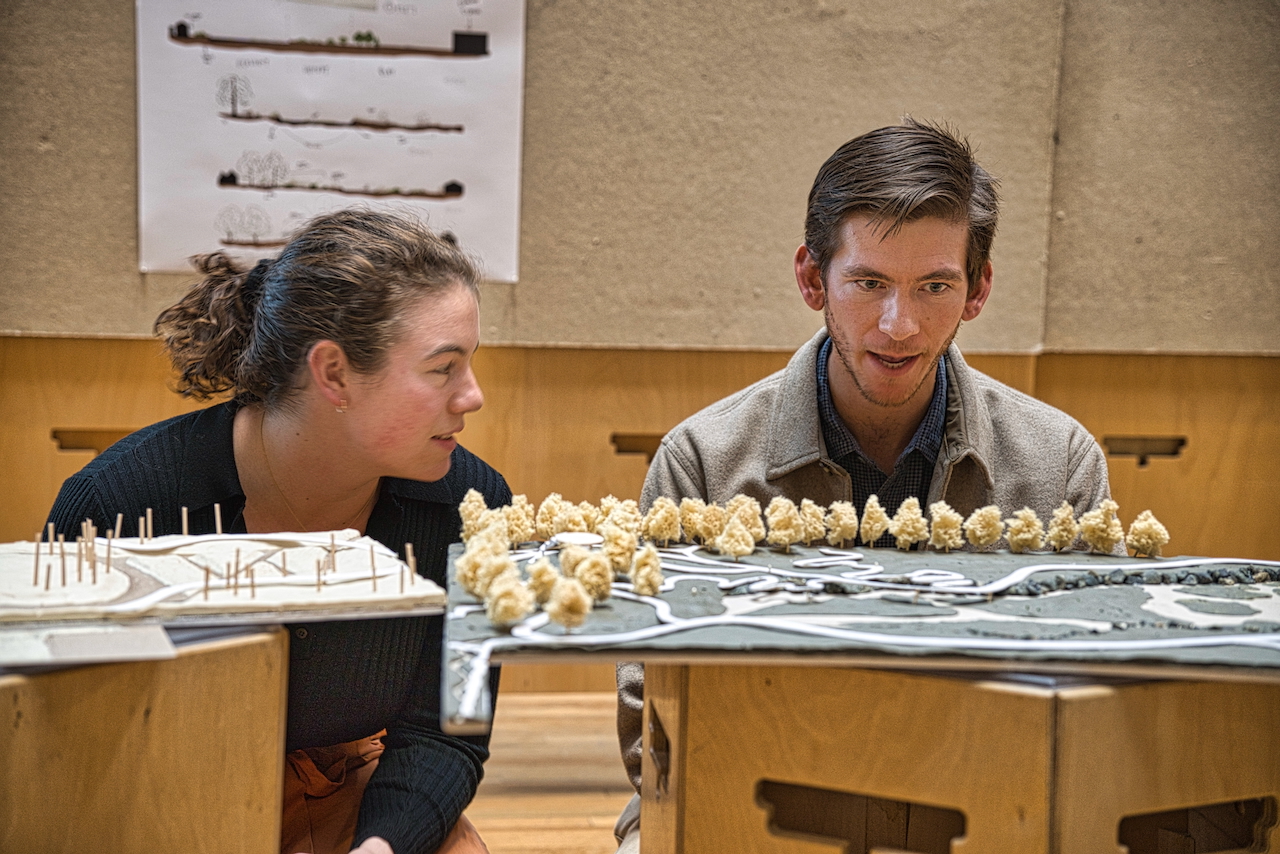

Reimagining the Forest: A Softer Edge and Enhanced Connections
The “Forest Group” presented a vision for a more permeable and interconnected forest, emphasizing the restoration of natural water systems and the creation of a "softer edge" between the forest and surrounding neighborhoods.
Their designs incorporated rain gardens, bioswales, and permeable surfaces throughout the neighborhood to capture and direct water into the forest, recharging groundwater and supporting a thriving ecosystem.
One of the most ambitious proposals involved the rerouting of Schmitz Creek to maximize the surface area available to salmon and enhance riparian zones. The design incorporated a network of boardwalks and trails, allowing visitors to experience the forest at different levels – from the creek bed to the canopy. The group also proposed transforming the Schmitz Park Elementary school site into a "bog - meadow - food - forest," offering opportunities for community gathering, food production, and ecological education.
Audience members raised several key points during the Q&A session, urging the students to:
● Provide clearer visualizations, such as photo collages, to help the community understand the scale and impact of the proposed interventions.
● Simplify their graphics to better communicate key ideas.
● Tell a more cohesive story about the project, emphasizing the connections between water, plants, trails, and gathering spaces.
● Focus on the unique textures and materials of the forest to convey the sensory experience of the landscape.
● Consider how the forest’s "seed dispersal system" could extend into the neighborhood through community engagement and planting initiatives.
Students responded by acknowledging the need for clearer communication and emphasizing their intention to refine their designs and presentations for the upcoming community open house.
They highlighted the potential for incorporating salvaged seedlings from neighborhood gardens into the replanting scheme.
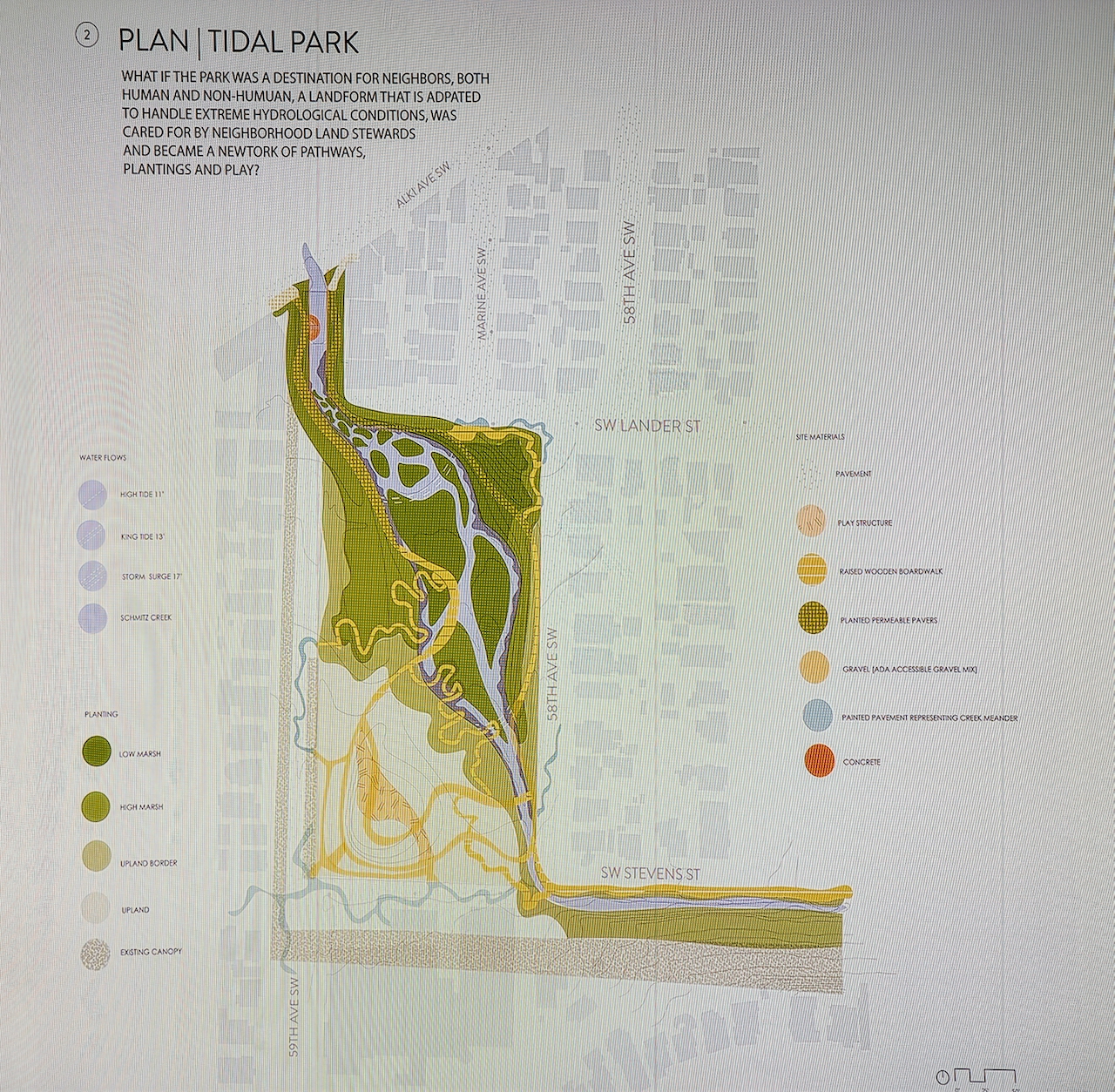
an outfall on Alki beach.
The Playfield Transformed: Balancing Ecology, History, and Recreation
Students reimagined the Alki playfield as a new park, dubbed "Tidal Park," serving as a vital link between the beach and the forest. Their designs prioritized ecological restoration through the daylighting of Schmitz Creek, while acknowledging the site's history and maintaining recreational opportunities.
Key features of the park design included:
● A meandering creek bed mimicking the natural flow of water and providing habitat for salmon.
● Permeable paving and raised boardwalks to minimize runoff and provide unique viewing experiences.
● Distinct zones dedicated to ecology, history, and play, reflecting the multifaceted nature of the site.
● Consideration of future sea level rise and storm surge, with the park designed to accommodate significant flooding.
Audience members offered valuable feedback on the concepts, prompting students to:
● Soften the hard edges of the creek and incorporate more natural transitions between water and land.
● Create opportunities for people to engage with the water in a safe and meaningful way.
● Incorporate nature play elements to connect the park with the adjacent elementary school.
● Consider the needs of diverse user groups, such as dog walkers, bird watchers, and people simply passing through.
● Think about how the experience of the park might change with fluctuating water levels.
Students responded by acknowledging the importance of creating a dynamic and engaging park experience. They emphasized their commitment to designing spaces that could accommodate both human use and ecological function.36 They also discussed potential solutions for addressing concerns about children's safety near the creek, such as incorporating retaining walls and dense plantings.
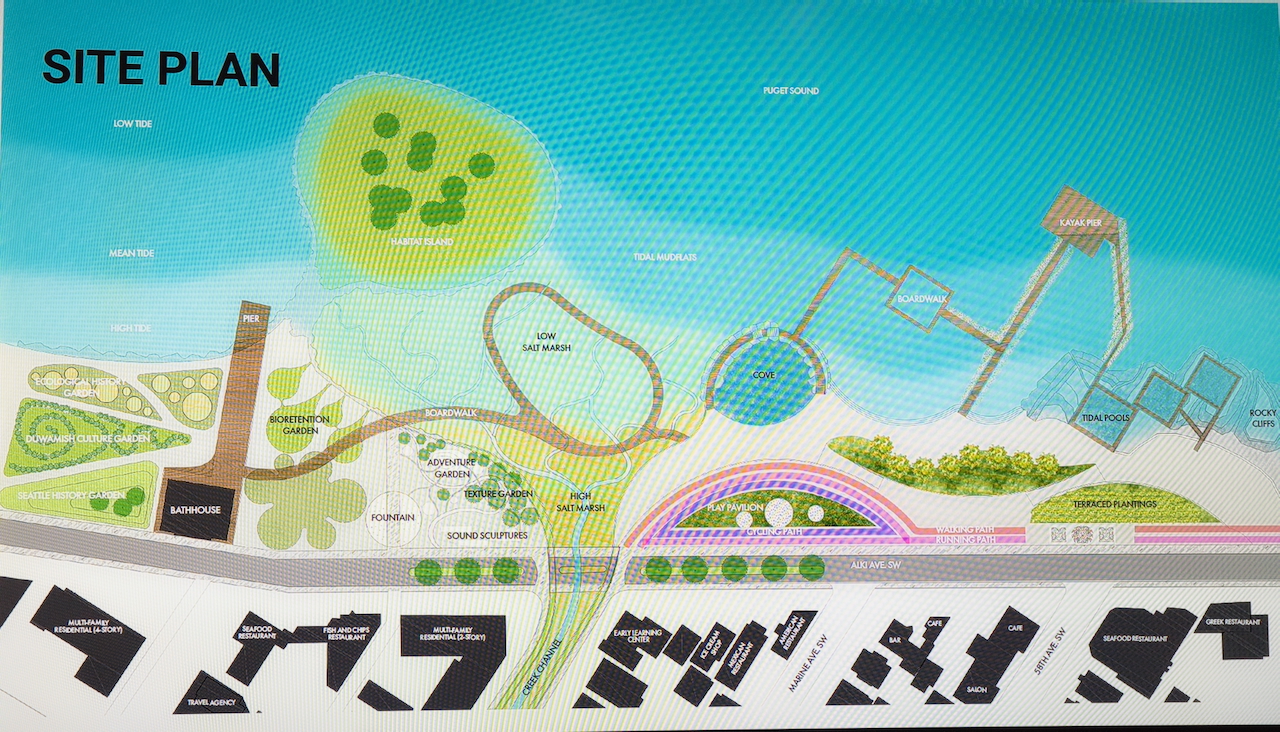
Reimagining Alki Beach: Integrating Ecology, Culture, and Recreation
The “Beach Group” presented designs for a revitalized Alki Beach, aiming to integrate ecological restoration with recreational and cultural experiences.They focused on creating a dynamic shoreline that could adapt to future sea level rise, while honoring the indigenous history of the site.
Key features of their design included:
● A dendritic creek channel filtering into salt marshes and tidal mudflats, providing habitat for a variety of species.
● Raised boardwalks offering unique perspectives on the changing shoreline.
● A series of gardens showcasing native plants and highlighting the cultural significance of the site.
● Consideration of sea level rise and storm surge, with proposals for raising Alki Avenue to protect the neighborhood.
Audience members offered insightful feedback, encouraging students to:
● Simplify their design and focus on creating a more cohesive and less fragmented experience.
● Soften the hard edges of their interventions and embrace the dynamic nature of the shoreline.
● Consider incorporating more natural elements into the design, such as driftwood and boulders.
● Create more opportunities for passive recreation, such as picnicking and simply enjoying the beach.
● Prioritize the ecological function of the beach and the needs of native species.
● Engage with local indigenous tribes to ensure their perspectives are incorporated into the design.
● Explore opportunities for using salvaged materials in the construction of new structures.
● Consider how the built environment could be adapted to accommodate future sea level rise.
Students responded by acknowledging the need for a more holistic and less fragmented design. They emphasized their desire to create a beach that felt uniquely "Seattle" and reflected the cultural and ecological values of the community. They also expressed interest in exploring the use of salvaged materials and incorporating indigenous design elements. They shared that they were working on securing indigenous representation for the final presentation. One exciting suggestion involved using sediment from the playground construction to create new landforms and enhance the ecological richness of the beach.
A Vision for the Future
The student presentations offered a compelling vision for the future of Schmitz Preserve Park and its connection to Alki Beach. Their designs demonstrated a deep understanding of the ecological, historical, and social complexities of the site. While further refinement and community engagement are necessary, the students’ work provides a solid foundation for creating a resilient and vibrant landscape that can adapt to the challenges of the 21st century.


